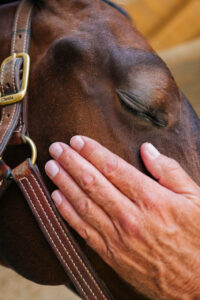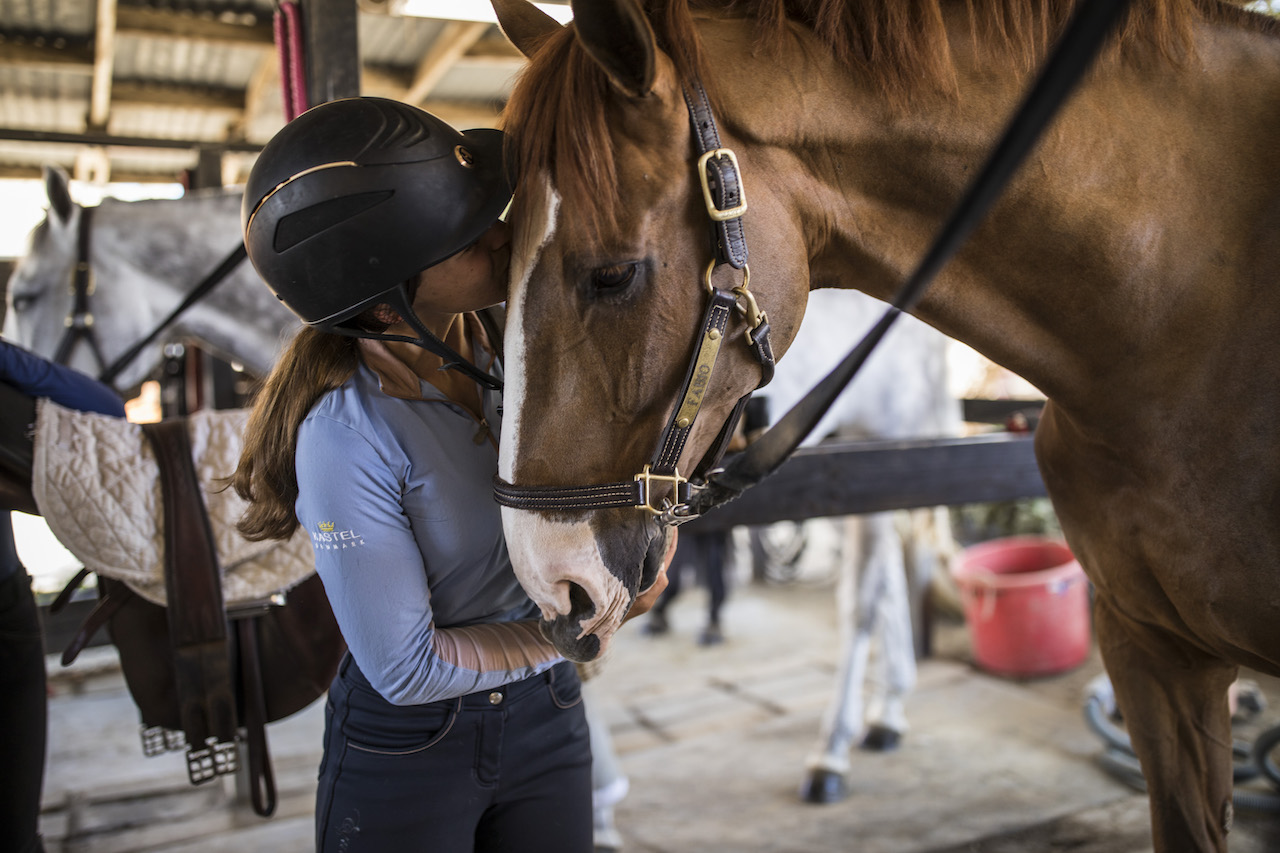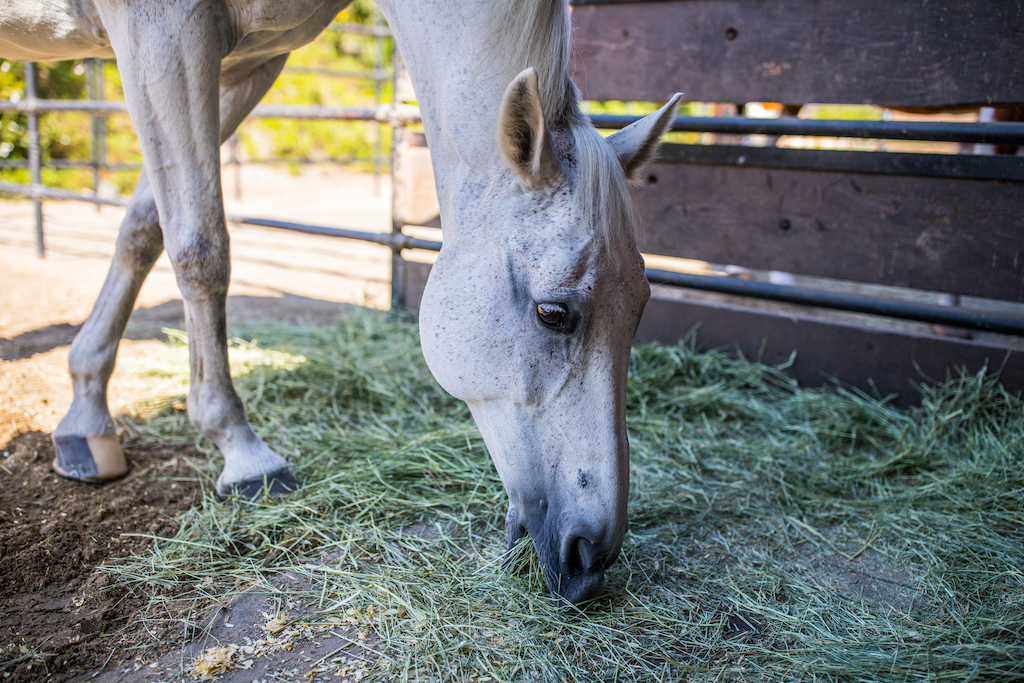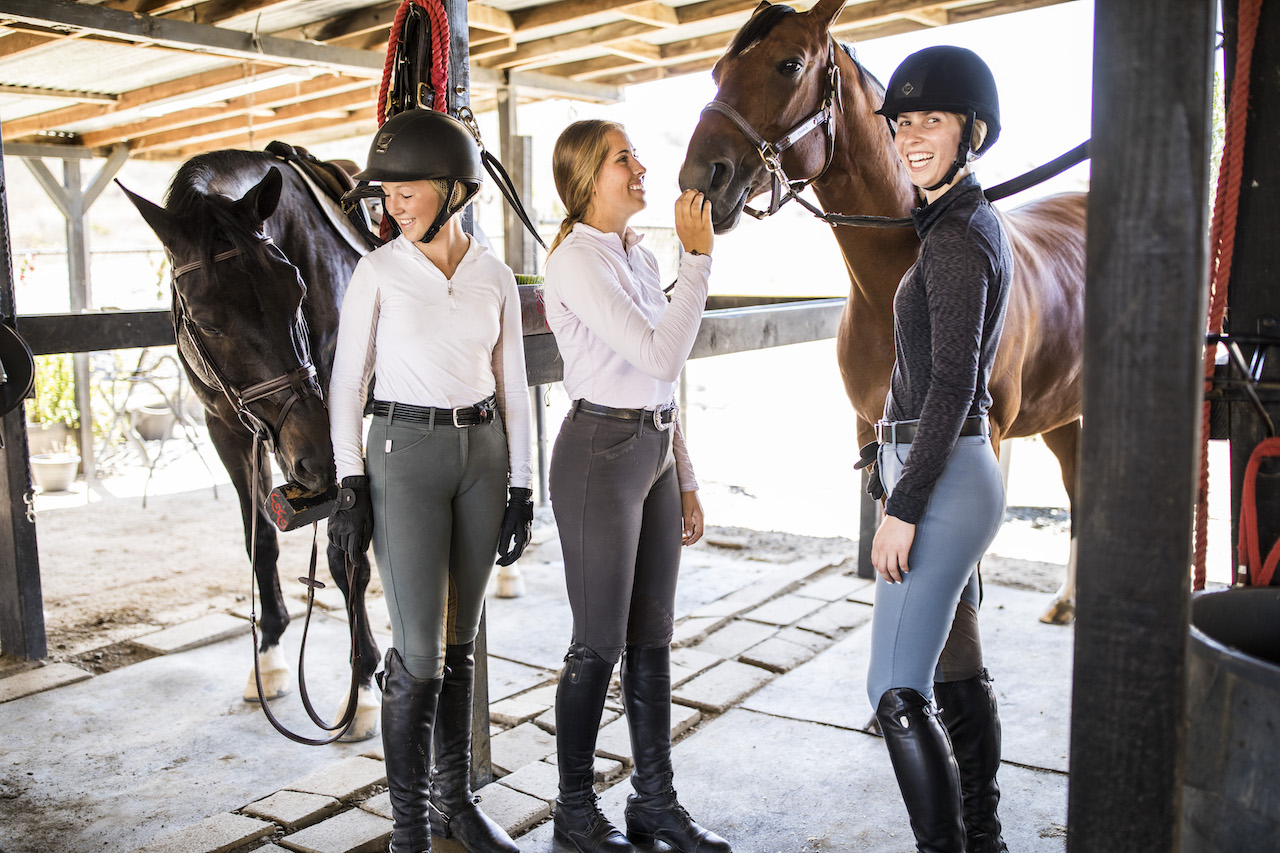Touch is arguably the most important source of sensory stimulation for a horse. It’s the very first sense to develop, and for the first few weeks of their life it’s the one he relies on most.
A newborn foal uses touch as soon as he is born, first to find his mother and then to stimulate milk flow for feeding and to obtain comfort while nursing.
This early skin-to-skin contact triggers the release of serotonin, dopamine, and oxytocin, often referred to as the “happy hormones” which are essential for bonding, development, and lifelong psychological stability.
Skin Deep
A horse’s skin provides a protective barrier between what’s inside and outside, and it’s the largest organ on his body. Sensitive nerve endings allow him to “feel” the world around him, whether that is the fly that lands on his rump, or the sharp thistle poking his muzzle while he grazes. These nerve endings send signals to his brain, which interprets them as sensations that can be used to protect him from harm.
“Touch sensitivities vary from horse to horse, but the facial area is where the epidermis is thinnest, making horses especially delicate around the eyes, nostrils, and mouth.”

You were probably taught that horses have blind spots in front of the eyes and under the jaw as a child? But did you know that his whiskers function as sense organs, working like an insect’s antennae?
The follicles on his face are deeper and wider than regular hair follicles and they help interpret distance, texture, temperature, shape, and movements in the environment. They are even thought to pick up vibrational energy!
That’s why vulnerable foals are born with extra-long whiskers to detect and discriminate possible dangers in their environment and why packs of wolves in the wild bring down a horse by latching onto its nose to knock it off balance.
It’s worth considering these facts when removing or thinning whiskers for esthetic purposes. A horse with a shaved muzzle is essentially cut off from the vital sensory information these whiskers provide. For example, picture what happens with dogs and cats when they’re forced to wear the “cone of shame” after an operation. They crash into doorways, table legs and can’t figure out how to eat or drink from bowls on the ground. A horse without his whiskers is deprived of spatial awareness too – his sensory organs are a safety mechanism that give him balance and a sense of orientation.
As of July 2021, the international governing body for equestrian sports (FEI) bans trimming horse whiskers on competition horses.
All Touch Is Not Created Equal
Touch is arguably the most important sensory stimulation for horses. Touch therapy can provide benefits such as pain relief, improved joint mobility, relaxation, and increased circulation.
While some riders use bareback riding to improve balance and feel more connected with their horse, others prefer to spend time massaging their horses before work to detect any stiffness, pain, swelling or tension or scratching their favorite spots like behind the wither or above the tail.
Horses are extremely sensitive – much more than people give them credit for. Learning about the importance of touch can enrich the relationship you have with your horse and help you better understand how he navigates his world.


